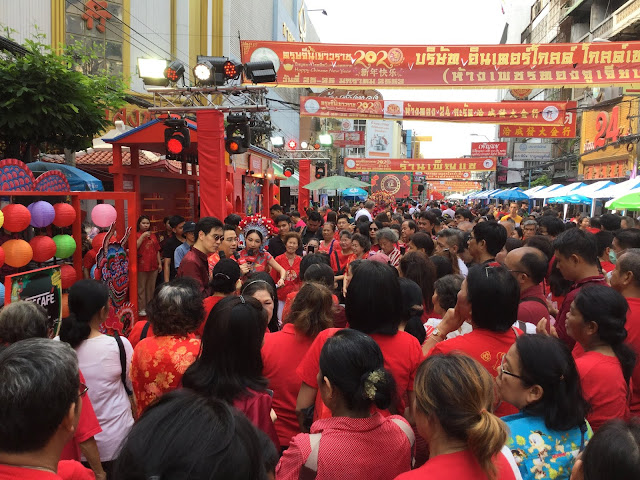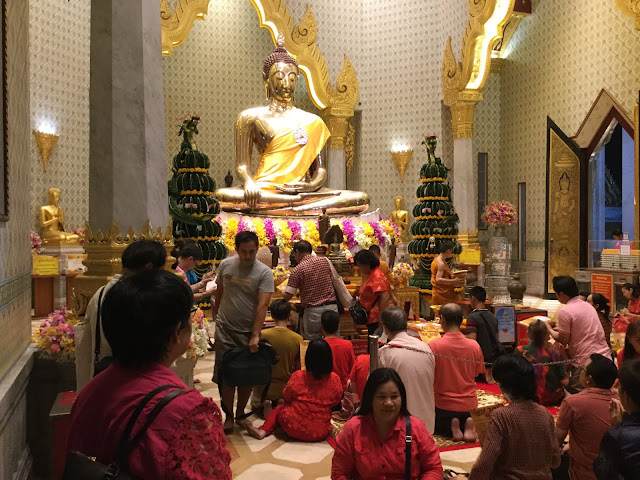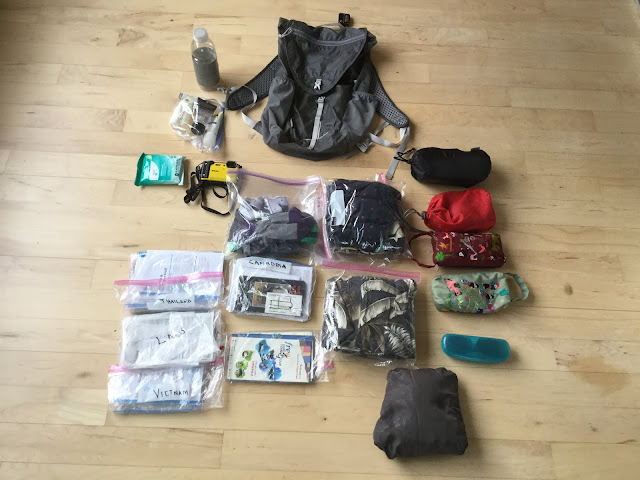I am looking forward to heading to SE Asia to get out of the cold Northwest winter where it has snowed in the past few days. My travels have been limited after I had to cut short my Morroco-Spain trip on March 20th since my right knee meniscus repair needed a bit more treatment--a shot of cortisone did the trick.
Then in June, I ended up getting hernia surgery most likely caused by some serious coughing I had while in Morocco. After recovering from that I was preparing to travel to Loreto, Mexico mid-October when I got hit by an Uber driver while in a crosswalk. I ended up with a torn MCL, ACL, and meniscus on my left knee. After three months of recovery, physical therapy, and acupuncture, I am now able to walk with slight pain. My Orthopedic Dr. says that full recovery will take about a year. Here is some of the snow I experienced on my way from having another physical therapy session at the UW Medicine Sports Medicine Clinic in the bowels of the Husky stadium.
For my upcoming trip, I plan to take it easy and enjoy some beach time in the warmer climate of SE Asia. I plan to enjoy the Chinese New Year celebrations in the Chinatown area of Bangkok.
While in SE Asia, I am scheduled to make two site visits to Room to Read projects in Kampong Cham Cambodia, and Can Tho, Vietnam.
Here is a report of a visit that Michelle Obama, Julia Roberts, and others made to a Room to Read event in Vietnam.
I will end my time there in mid-April by celebrating Songkran, a Thai national holiday as a purification that focuses on water as a way to wash away bad luck and sins, marking the changing of the seasons, and honoring Buddha and ancestors. Songkran includes all-out water fights throughout the country and tourists are popular targets. I guess Thais feel that the tourists are in special need of purification.
Here are some of the features of planning for my trip:
Frequent Flyer Miles
This will be my 48th international flight to Europe, Asia, and Latin America using about 2.5 million frequent flyer miles or points. So far I have used 2.5 million miles/points for my trips which otherwise would have cost over $83,000. For this flight on Korean Air, I used 61,712 points from my new Barclaycard Arrival + MasterCard. I received 70,000 points for opening this card which gives 2 points for each $1 spent. To use the points all you do is buy an airline ticket using the card and then the Barclay points are used to credit back your account for the cost of the air ticket. Right now this roundtrip ticket from SEA to BKK is $636.
We use our credit cards for almost all purchases to rack up a lot of miles. I do what is called "churning" my credit cards. To learn more about "churning" and how to maximize the frequent flyer programs go to the Frugal Travel Guy website: http://www.frugaltravelguy.com or similar sites.
Just remember for this to work well, you MUST pay off the balance on ALL of your credit cards.
Money
No more travelers check and no more big money belt with a large stash of USD now that ATMs are so popular in all of the countries I visited. Be sure to use the ATMs at the airport before leaving. They offer a good exchange rate compared to companies at airports.
Occasionally you will find that your ATM card does not work at a certain bank ATM machine or at another ATM machine whose ATM bank machine previously worked. Just keep trying other ATMs.
I begin my trips with about $300 USD in $20s and about 10 one-dollar ($1) bills just in case I cannot locate an ATM machine. Since the fee is about the same whether you take a small amount of money or large, I usually get a larger amount like around $250 to $300 USD in the local currency. Many places have a limit of about $100 to $175 that you can withdraw at any one time though.
WARNING: DO NOT LOSE YOUR ATM CARD OR LEAVE IT IN THE MACHINE.
At many of the hotels, restaurants, and tour offices, credit cards are accepted but may charge you a fee of 2-3%. When using a credit card internationally, be sure that the card you use does not have a foreign exchange fee too—-you do not want to end up paying 6% for using your credit card.
You should carry two different ATM cards and two different credit cards—one for your wallet and the other in your money belt and/or in the security box back at the hotel. If you get robbed or lose your wallet, you will still have your backup ATM and credit cards so you won’t have to stop your travels to wait for a replacement or curtail your trip like I did in Barcelona.
Potable Water
Many travelers and locals buy and use plastic water bottles. I don’t like to see such a waste of resources with the bottles just going into landfills or being recycled. I continue to use a SteriPen—its ultraviolet rays purify the water—-along with a wide-mouth plastic bottle. The recharger cable for the SteriPen has a USB connection and also worked recharging my iPad keyboard and my Nikon camera which saved me about 4 oz. The purification process is quick—-about 1 1/2 minutes of UV light and no chemicals. I have had no intestinal problems during my trips.
My Luggage
The backpack items weigh 9.5 pounds and include:
- Gossamer Gear Utility Pack and combination lock at 12.6 oz.
- Maroon Bag—Video Camera, battery, and SD cards at 12.6 oz.
- Black bag—medicines, razors, sewing kit, pen, pencil, file, mirror, bandaids,, whistle, business cards, plug, towel at 13 oz.
- Red bag—deodorant, razor, floss, toothbrush, paste, eye mask, flashlight, earplugs, chapstick, Steripen at 11 oz.
- Plastic bag—soap, hair gel, H2O2, Neosporin, and sunscreen at 11.1 oz.
- Green designer bag—iPad camera charger, 5 SD cards, earphones, batteries at 8 oz.
- Plastic 1-liter bottle, sunglasses at 4 oz.
- 3 shirts and PJs at 28.4 oz.
- China rain jacket at 6.8 oz.
- 1 pair of socks, shorts, and swimsuit at 7.4 oz.
The items I am wearing weigh 7.8 pounds and include:
- Shoes and socks at 30 oz.
- Nikon W300 camera at 8.6 oz.
- 2 shirts at 14 oz.
- Merino hoodie at 16 oz.
- Columbia pants, shorts, belt, and pedometer at 19.5 oz.
- Money belt, passport, and wallet at 8 oz.
- Sunglasses and case at 4 oz.
- Handiwipes at 3.5 oz.
- Chiang Mai bag—mini iPad with keyboard, travel documents, calendar, watch at 37 oz.
If I need more clothing, all I need to do is to buy it. I find it so much easier to travel with fewer things than to burden myself with lots of things. For this to work, I frequently wash out my clothing at night or if I am staying for a few days, take it to the laundry. Too many travelers carry huge packs with several changes of clothing and trinkets which burden them down and make their travels from one place to another a real chore while wearing just shorts, tee-shirt, and flip flops. I usually hold off buying trinkets until right before I am leaving so I am not schlepping them around.
Travel Insurance
You must have travel insurance any time you travel! Avoid signing up for the travel insurance offered by the airline companies as a part of your ticket purchase because you will end up paying more and getting less coverage, especially if you take multiple trips each year that are more than 100 miles from your home.
I buy annual travel insurance from Travelguard which costs $259 per year. You need to call them for this annual insurance since is not shown on their website. The coverages and benefits for travel at least 100 miles from home and 90 days or less include:
- accident and sickness medical expenses $50,000
- baggage and personal effects $2,500
- baggage delay $1,000
- emergency evacuation $500,000
- travel medical assistance included
- trip cancellation $1,500
- trip interruption $2,500
- 24/7 travel assistance included
When you use your credit card for travel purchases, there are a number of benefits you may qualify for including collision coverage for car rentals, trip delays and/or cancellation, up to accidental death benefits, etc.
Still Loving My Mini-iPad
I have loaded the Lonely Planet travel guides for Vietnam, Thailand, Laos, and Cambodia to n my mini-iPad along with other travel guides. Again this saves me from hauling around about 3 lbs of books. I still cut out the city sections including the maps and put each in a ziplock bag for easy reference. When I am done with them, I leave them at the hotel I am staying at so others may enjoy it.
I use the iBook feature for some of the books and reports I have, but I still prefer picking up used fiction books along the way.
Other travelers and locals enjoyed seeing the photos and videos I had on the mini iPad, especially when they were in the pictures.
I use it to keep a record of all of my expenses as I travel on the Numbers spreadsheets.
I have a compass app I use to check the directions to walk when confused, especially in the cities.
The world clock feature is useful when calling home or teleconferences.
I use the alarm clock feature when I need to get up early for travel.
WiFi spots at hotels, guesthouses, restaurants, airports and other locations are much more available throughout the tourist areas than found at home.
The battery life was generally not a problem. I found it easy to recharge at most stops.
Subscribe to My YouTube Channel
I have recently uploaded all of my travel videos to YouTube now that they allow longer uploads and you may want to see my travel adventures there. That link is
https://www.youtube.com/c/huntforgold.
If you do go there, please subscribe to my video channel since it will help me eventually get some income there and help with my future travels.

































